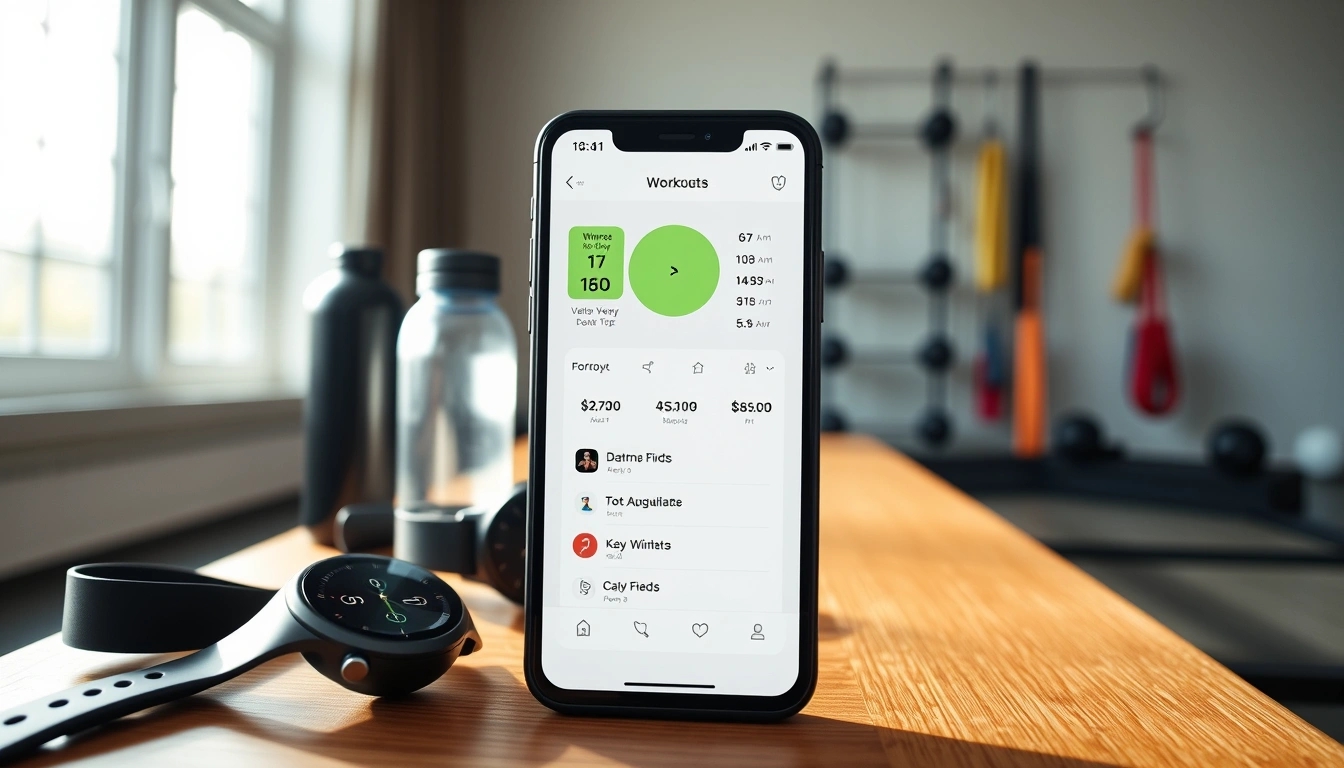Consistency in training—yeah, that elusive magic ingredient everyone raves about but somehow only a handful really nail. It’s like the secret handshake in the fitness world; you know it’s important, yet sticking to it feels tougher than nailing a perfect deadlift form on day one. So, what’s the deal? Why do so many start strong and then fizzle out? Let’s break it down, no fluff, just the real talk and practical tips to help you keep grinding.
Understanding Why Consistency Matters
Before you go all-in on some wild workout routine, take a sec to understand why showing up regularly beats those rare, beast-mode sessions. Think of your body like a plant: watering it daily helps it grow steady; dumping a gallon once a week? Not so much. Regular training not only builds muscle and endurance but also slashes injury risks. That’s right, your body loves routine, even if your brain screams, “Binge Netflix instead!”
| Why Consistency Wins | Why Occasional Intensity Fails |
|---|---|
| Steady progress with less burnout | Risk of injury and fatigue spikes |
| Better habit formation | Hard to build momentum |
| Improved mental toughness | Motivation dips easily |
Setting Realistic and Achievable Goals
Look, dreaming big is awesome, but if you set the bar so high you can’t even see it, you’ll just trip over your own feet. Instead, slice your goals into bite-sized chunks. Want to run a marathon? Cool, first aim for a 5K. Celebrate those wins! It keeps the motivation alive and spares you from that “I quit” moment.
- Tip 1: Write down your goals and revisit weekly.
- Tip 2: Adjust goals based on how you feel and progress.
- Tip 3: Reward yourself for hitting milestones (yes, pizza counts).
Creating a Flexible Training Schedule
Life’s messy — surprise, surprise! The kid’s sick, work’s a nightmare, or you just want to sleep in. Building a training plan that’s too rigid? Recipe for disaster. Instead, make it adaptable. If you miss a morning session, don’t sweat it; swap it for the evening or even a quick home workout. The key is not breaking your streak entirely.
Sample Weekly Plan:Monday: Gym - Strength TrainingTuesday: Rest or light yogaWednesday: HIIT session or brisk walkThursday: Gym - Upper bodyFriday: Rest or active recoverySaturday: Outdoor run or cyclingSunday: Flex day - whatever fits your mood
Tracking Progress Without Obsession
Yeah, tracking is motivating but don’t turn into a stats junkie obsessing over every gram lifted or second shaved off your run. Keep it simple: jot down your workouts, note how you feel, and glance back monthly. Balance is key — tracking should fuel your fire, not burn it out.
Dealing With Motivation Slumps
Motivation’s like a fickle friend — sometimes there, sometimes ghosting you. When you’d rather binge-watch than hit the gym, try switching things up. Maybe a new playlist, a workout buddy, or even just reminding yourself why you started. And hey, it’s okay to have off days. Just don’t make “off” a habit.
| Motivation Slump Busters | Why They Work |
|---|---|
| Change your workout environment | Breaks monotony, refreshes your mind |
| Find an accountability partner | Social pressure keeps you honest |
| Set mini-challenges | Keeps things fun and goal-oriented |
The Role of Nutrition and Recovery in Consistency
Don’t fool yourself—training hard alone won’t cut it. Your body needs fuel and rest. Skimp on nutrition or recovery, and you’re flirting with burnout. Think of food as your training partner and sleep as your secret weapon. Neglect either, and consistency will fly out the window.
How Accountability Partners and Coaches Help
Sometimes, self-motivation is like pulling teeth. Enter accountability partners and coaches — your personal cheerleaders and drill sergeants rolled into one. They push you when you’re lazy, keep you honest, and celebrate wins that you might downplay. If you’re struggling solo, get someone on your team.
Common Mistakes That Kill Consistency
Here’s a quick rundown of traps that wreck your progress:
- Overtraining and ignoring rest days
- Setting unrealistic goals
- Not adapting to life’s curveballs
- Obsessing over minor setbacks
- Neglecting nutrition and recovery
Practical Tools and Apps to Stay on Track
Tech can be a blessing or a curse. Apps like MyFitnessPal, Strava, or even a simple calendar reminder can keep you accountable without turning your training into a spreadsheet nightmare. Find what clicks for you and keep it simple.
In the end, consistency isn’t about perfection. It’s about showing up, adapting, and forgiving yourself when you don’t. Master that, and the gains will follow. Now, go crush it — one day, one workout, one rep at a time.
Understanding Why Consistency Matters
Look, we all know that crushing a workout now and then feels great—like a one-off sprint where you’re pumped, sweaty, and ready to conquer the world. But here’s the kicker: when it comes to real, lasting fitness gains, showing up regularly beats those sporadic, intense sessions every single time. It’s not just some boring advice your gym coach throws at you to sound wise; there’s legit science and experience behind it.
Imagine your body as a car engine. You wouldn’t drive it flat out for one day and then park it for weeks, right? Your muscles, joints, and cardiovascular system need steady, consistent work to adapt and improve. That means frequent, manageable workouts rather than random bursts of extreme effort. This steady approach not only builds strength and endurance but also helps your body avoid the dreaded injuries that come from pushing too hard after too long a break.
- Steady Progress Beats Flashy Gains: When you train consistently, your body adapts gradually. This means fewer setbacks and a more stable upward curve in your fitness level.
- Injury Prevention: Overdoing it once in a while? Sure, it happens. But when it’s the norm, you’re flirting with strains, sprains, and worse. Consistency lets your body build resilience.
- Mindset Matters: Showing up regularly builds discipline and turns exercise into a habit, not a chore.
Now, I’m not saying every workout has to be a masterpiece or that you need to hit the gym seven days a week. Far from it. It’s about regular engagement, even if that means a quick 20-minute session or a casual walk. The point is to keep the momentum going. Think of it like watering a plant—you don’t drown it once a month and expect it to thrive; you give it a little love consistently.
| Consistency Benefits | Why It Matters |
|---|---|
| Improved Endurance | Gradual adaptation reduces fatigue and boosts stamina |
| Muscle Growth | Frequent stimulus encourages hypertrophy without overtraining |
| Injury Reduction | Body strengthens connective tissues and joints over time |
| Better Mental Health | Routine exercise lowers stress and improves mood consistently |
And hey, if you’re thinking, “But I don’t have time every day!”—join the club. Life’s messy and unpredictable. The magic is in showing up when you can, even if it’s less than perfect. That’s way better than going all out once and then ghosting your fitness goals for weeks. Trust me, your future self, the one who’s fitter and less prone to injuries, will thank you.
So next time you’re tempted to skip a workout because you “don’t feel like it,” remember: consistency isn’t about perfection, it’s about persistence. And that’s the real game-changer in fitness.
Setting Realistic and Achievable Goals
Look, we all love shooting for the stars. Setting those grand, moonshot goals feels thrilling — like you’re about to conquer the world or at least run a marathon in under three hours. But here’s the kicker: while aiming high is inspiring, it can also be a sneaky trap that leaves you demoralized, burned out, or worse, quitting before you even get started. That’s why dialing down to realistic, achievable goals is the secret sauce to keeping your motivation alive and kicking over the long haul.
Why Moonshot Goals Can Backfire
Sure, telling yourself you’ll lose 50 pounds in a month or bench press double your body weight sounds badass. But let’s be honest — those targets often ignore the messy, unpredictable nature of life. When reality hits and progress stalls (because it always does), frustration creeps in. Suddenly, that lofty goal feels more like a millstone than a motivator. Instead of pushing forward, you might throw in the towel or spiral into a guilt trip that kills your vibe.
- Burnout is real: Overreaching can exhaust both your body and mind.
- Early quitting: Unrealistic goals make setbacks feel like failure.
- Motivation dips: When progress is slow, enthusiasm tanks.
So, What Does a Realistic Goal Look Like?
Think of your goals like a staircase, not a rocket launch. Each step should be challenging enough to push you but not so tough that you trip and fall. For example, instead of “I’ll train every single day for 2 hours,” try “I’ll work out 3-4 times a week, 30-45 minutes each session.” Small wins add up and build momentum, which is the real game-changer.
Example Goals Comparison----------------------------------------| Unrealistic Goal | Realistic Goal ||------------------------|------------------------|| Lose 20 lbs in 2 weeks | Lose 1-2 lbs per week || Workout 7 days a week | Workout 4 days a week || Run 10 miles first day | Run 1 mile, then build |----------------------------------------
Keep It Personal and Flexible
No two people are the same, and that’s a beautiful thing. Your goals should fit your lifestyle, not the other way around. Got a hectic job or family commitments? Factor that in. Maybe your “realistic” looks different from your buddy’s — and that’s totally okay. The trick is to keep goals adaptable. If life throws curveballs (and it will), tweak your targets instead of tossing them out.
Celebrate Progress, Not Perfection
One of the biggest mistakes? Waiting until you hit that “perfect” goal to celebrate. Nah, celebrate the small stuff! Managed an extra rep? Nailed a healthy meal? Those wins keep your spirits high and your eyes on the prize.
| Tip | Why It Helps |
|---|---|
| Set SMART goals (Specific, Measurable, Achievable, Relevant, Time-bound) | Creates clarity and focus |
| Break big goals into mini-milestones | Prevents overwhelm and builds confidence |
| Adjust goals based on progress and circumstances | Keeps motivation sustainable |
| Keep a journal or log | Tracks progress and reveals patterns |
At the end of the day, realistic goal-setting is about respecting your limits while still pushing yourself — not like a drill sergeant, but more like a wise coach who knows when to push and when to chill. So, don’t just dream big. Dream smart. Your future self will thank you.

Creating a Flexible Training Schedule
Life isn’t some perfectly choreographed dance where every step lands just right—far from it. Your training plan? It’s gotta roll with the punches, bend when life throws curveballs, and still keep you moving forward without making you feel like a total failure. Seriously, if your workout plan doesn’t have some wiggle room, you’re setting yourself up for frustration and, let’s be honest, eventual burnout.
Here’s the deal: rigid schedules are a recipe for disaster. Missed a session because your boss dumped a last-minute project on your desk? No sweat. Got stuck babysitting your niece when you planned to hit the gym? It happens. The key is having a training plan that’s flexible enough to let you swap days, shorten sessions, or even change the type of workout without guilt.
- Prioritize your workouts: Identify which sessions are non-negotiable (like heavy lifting or long runs) and which ones can be swapped or shortened.
- Mix intensity levels: Not every day needs to be a beast mode day. Throw in some light sessions or active recovery to keep momentum without burning out.
- Build in buffer days: Life happens. Having “floating” days in your schedule lets you catch up or rest without breaking your streak.
| Challenge | Flexible Solution | Why It Works |
|---|---|---|
| Unexpected work meetings | Swap planned gym session with a short home workout or active stretching | Maintains habit without demanding extra time or equipment |
| Feeling wiped out | Replace high-intensity training with yoga or a gentle walk | Allows recovery while keeping you consistent |
| Travel or social events | Use bodyweight exercises or quick circuits in hotel rooms or parks | Keeps routine alive despite environment changes |
Look, the truth is, your training plan should be more like a trusty sidekick than a dictator. If it’s too strict, you’ll either quit or feel like crap every time life doesn’t cooperate. Instead, think of it as a living blueprint—one that adapts, evolves, and even surprises you sometimes. And hey, missing a workout or switching things up doesn’t mean you’re off track; it means you’re human.
So, next time you feel like skipping because “the plan said no,” remember: the plan is there to serve you, not the other way around. Embrace the messiness, cut yourself some slack, and keep showing up—even if it’s just a 10-minute sweat sesh on a crazy day. That’s how you build a streak that lasts, not breaks.
Quick Tips to Build Flexibility Into Your Schedule:
- Keep a list of “go-to” workouts that require minimal gear or time.
- Use calendar apps that allow easy rescheduling with reminders.
- Set weekly goals instead of daily to allow shifting priorities.
- Communicate your schedule with friends or family to get support.
In the end, consistency isn’t about perfection—it’s about persistence. And a flexible training schedule? That’s your best bet to keep the fire burning without feeling chained to a rigid plan that life loves to mess with.
Tracking Progress Without Obsession
Staying on top of your training progress is like having a map on a road trip — it helps you see where you’ve been and where you’re headed. But here’s the catch: get too fixated on every little number or tiny improvement, and suddenly your journey feels more like a chore than a joyride. It’s a fine line between motivation and obsession, and nailing that balance is what keeps your vibe alive.
- Why Tracking Matters: When you jot down your reps, weights, or times, you create a record that shows growth over time. It’s proof you’re not just spinning your wheels. Seeing progress, even small wins, can fire up your motivation and keep you coming back for more.
- But Beware the Pitfalls: Obsession with every detail — that one extra rep, the tenth of a second shaved off your run — can spiral into stress. Suddenly, a missed workout or a plateau feels like the end of the world. Spoiler alert: it’s not.
| Tracking Method | Pros | Cons |
|---|---|---|
| Workout Journal | Simple, customizable, no tech needed | Can get tedious, easy to forget |
| Fitness Apps | Automated tracking, progress charts | Can be distracting, too much data overload |
| Photos & Measurements | Visual proof, holistic progress | Body changes can be slow and subtle |
Here’s a pro tip: choose one or two tracking methods that feel natural and sustainable for you. No need to drown yourself in spreadsheets or obsessively check your phone every hour. Remember, the goal is to encourage consistency, not stress you out.
Sometimes, the best progress is felt rather than measured. You might notice you’re less winded climbing stairs or that your mood lifts after workouts — these wins don’t show up on any app but are just as real. So, keep an eye on the big picture and let the small stuff slide.
Tips for Balanced Progress Tracking:- Log workouts, but don’t fixate on perfection.- Celebrate milestones, no matter how small.- Take rest days seriously — progress happens outside the gym too.- Use tracking tools as guides, not judges.
At the end of the day, training should be about feeling stronger, healthier, and more confident — not about chasing numbers until you’re burnt out. So, track smart, keep it chill, and enjoy the ride.
Dealing With Motivation Slumps
Let’s be real—motivation isn’t some magical, everlasting flame burning bright every single day. It’s more like a candle in a drafty room, flickering, sputtering, sometimes just about ready to blow out. You know the drill: one day you’re pumped, ready to crush that workout, and the next? You’re seriously considering binge-watching an entire season of your favorite show instead of hitting the gym. Happens to the best of us. The question is, how do you push through when your couch is calling louder than your dumbbells?
First off, recognize that slumps are normal. Nobody’s motivation meter stays at 100%. Accepting this fact takes a little pressure off. When you feel that slump creeping in, don’t beat yourself up. Instead, try these strategies that might just save your sanity and your training streak.
| Strategy | How It Helps | Quick Tips |
|---|---|---|
| Break It Down | Small wins build momentum. | Instead of a 60-minute session, commit to 10 minutes. Often, starting is the hardest part. |
| Change Your Environment | New surroundings can spark energy. | Try working out outside or in a different room to shake off boredom. |
| Mix Up Your Routine | Prevents monotony and keeps things fresh. | Swap cardio for yoga, or weights for bodyweight exercises. |
| Use Rewards | Creates positive reinforcement. | Allow yourself a treat post-workout, like a smoothie or an episode of that show. |
Now, here’s a little secret: sometimes the best motivation is just plain discipline. Yup, that boring, unsexy word nobody wants to hear. When motivation dips, discipline is what keeps the wheels turning. It’s showing up even when you don’t feel like it. Think of it like brushing your teeth—you don’t always want to, but you do it anyway because you know it’s good for you.
- Set non-negotiable workout times. Treat them like important meetings you can’t miss.
- Find an accountability buddy. Someone who’ll check in, remind you, or even guilt-trip you into action.
- Track your streaks. Apps or calendars that show your progress can be surprisingly motivating.
But hey, if you really can’t drag yourself off the couch some days, that’s okay too. Rest and recovery are part of the game. The trick is not to let one lazy day turn into a week or a month. Remember, consistency doesn’t mean perfection. It’s about showing up more often than not.
Motivation Slump Survival Checklist:- Acknowledge the slump without guilt- Break workouts into bite-sized chunks- Switch up your environment and routine- Lean on discipline when motivation fades- Use rewards wisely- Keep an accountability partner close- Don’t let rest days snowball
So next time you’re torn between the gym and your comfy couch, remember: motivation may flicker, but your commitment doesn’t have to flame out. Sometimes, just putting on your workout shoes and stepping out is the victory itself. And trust me, that’s a win worth celebrating.

The Role of Nutrition and Recovery in Consistency
Alright, let’s get real for a sec — training hard might be the flashy part of your fitness journey, but if you think you can just grind endlessly and expect to keep up that pace, well, you’re in for a rude awakening. Consistency in training doesn’t just hinge on how many reps you smash out or miles you clock; it’s also about what you’re feeding that machine (your body) and how you let it chill and rebuild afterward. Skimp on nutrition and recovery, and you’re basically setting yourself up for burnout city, or worse, injury alley. Not exactly the dream, right?
Fueling Your Body Right: More Than Just Calories
You might hear folks say, “Eat clean, train mean,” but what does that even mean? It’s not about starving yourself or shoving kale down your throat like it’s some punishment. It’s about giving your body the right balance of macronutrients — proteins, carbs, and fats — to power through workouts and bounce back faster. Protein is your best buddy here; it’s the building block for muscle repair. Carbs? They’re the energy currency, especially for those high-intensity sessions. And fats? Don’t ditch them; they keep hormones in check and support overall health.
| Macronutrient | Role | Sources |
|---|---|---|
| Protein | Muscle repair and growth | Chicken, fish, beans, tofu, eggs |
| Carbohydrates | Energy for workouts | Whole grains, fruits, vegetables |
| Fats | Hormone regulation and cell health | Avocado, nuts, olive oil, fatty fish |
Now, don’t get me wrong, timing isn’t everything, but it does matter. Chowing down on a balanced meal or snack before and after training can seriously boost your performance and recovery. Ever tried running on empty? Yeah, not fun.
Recovery: The Unsung Hero
Here’s the kicker — your muscles don’t get stronger during workouts; they get stronger when you rest. That’s right, all that sweat and grunting is just the setup. Recovery is the real MVP. Sleep, hydration, and active rest days are your secret weapons here. Skimp on sleep, and your body’s hormone levels go haywire, making you feel like a zombie with no gains. Staying hydrated? It’s not just about avoiding cramps; it helps flush out toxins and keeps your joints happy.
- Sleep: Aim for 7-9 hours; it’s when growth hormone spikes.
- Hydration: Sip water throughout the day, not just during workouts.
- Active Recovery: Think light walks, yoga, or stretching to keep blood flowing.
Ignoring these can turn your “hard training” into a fast track to burnout. Trust me, pushing through when your body screams for rest isn’t heroic; it’s reckless.
| Recovery Element | Why It Matters | Tips |
|---|---|---|
| Sleep | Muscle repair and hormone balance | Stick to a routine, avoid screens before bed |
| Hydration | Maintains energy and joint health | Carry a water bottle, track intake |
| Active Rest | Prevents stiffness, aids circulation | Light movement, foam rolling |
So, if you want to keep showing up day after day without feeling like a wreck, remember: training hard is just one slice of the pie. Nail your nutrition and recovery game, and you’ll be surprised how much easier it is to stay consistent — and actually enjoy the ride. Because let’s face it, nobody wants to quit halfway through or feel like their body’s waving a big red flag every time they hit the gym.
In the end, it’s about balance — working smart, eating right, and giving your body the TLC it deserves. Do that, and consistency won’t be some mythical beast; it’ll be your new best friend.
How Accountability Partners and Coaches Help
Let’s be honest — sticking to a fitness routine can sometimes feel like trying to herd cats. You start off all fired up, but somewhere between the third workout and the fifth skipped session, motivation takes a nosedive. That’s where accountability partners and coaches come into play, acting as the much-needed nudge or cheerleader you never knew you needed. They’re not just there to yell “You got this!” (though that helps), but to keep you honest, motivated, and often, to remind you why you started in the first place.
Think about it: when you train alone, it’s easy to make excuses — “I’m too tired,” “I’ll just skip today,” or the classic “I’ll start fresh on Monday.” But when someone else is counting on you, those excuses suddenly sound a lot less convincing. Accountability partners create a sense of responsibility that goes beyond your own willpower. It’s like having a workout buddy who expects you to show up, whether you feel like it or not. And if you’re lucky, they might even bring snacks afterward — a win-win!
- Peer Accountability: Friends or colleagues who share your fitness goals can provide mutual support and friendly competition.
- Professional Coaches: Experts who tailor workouts and monitor progress, offering feedback and motivation.
- Online Communities: Virtual groups where you can share wins, struggles, and get advice.
Now, coaches aren’t just drill sergeants barking orders. A good coach understands your unique challenges and adapts your program accordingly. They help you set realistic goals, tweak your form, and push you just enough without leading you to injury. Plus, having someone track your progress means you’re less likely to cheat yourself. It’s like having a personal GPS for your fitness journey — you know where you’re headed, and you get rerouted if you stray.
| Benefit | How It Helps |
|---|---|
| Consistency | Knowing someone expects you keeps you on track even on lazy days. |
| Motivation | Cheerleading and encouragement boost morale during tough times. |
| Expert Guidance | Coaches provide tailored advice to maximize results and prevent injury. |
| Accountability | Less chance to skip workouts or slack off when someone’s monitoring progress. |
But wait, it’s not all sunshine and rainbows. Sometimes accountability can feel like pressure — the kind that backfires if you’re already stressed or overwhelmed. It’s crucial to find the right balance and the right partner or coach who understands your limits and respects your pace.
So, if you’ve been spinning your wheels solo, maybe it’s time to recruit that workout buddy or invest in a coach. Because at the end of the day, fitness isn’t just about muscles or endurance — it’s about showing up, even when Netflix is calling your name louder than the gym. And having someone in your corner? That’s the secret weapon many overlook.
Quick Tips to Choose Your Accountability Partner or Coach:
- Pick someone reliable and supportive, not just a yes-person.
- Look for shared goals or complementary skills.
- Set clear expectations about communication and check-ins.
- Don’t be afraid to switch if the vibe isn’t right.
Remember: Sometimes, a little push from others is exactly what you need to keep the fitness fire burning bright. So, go ahead — find your cheerleader and let the gains begin!
Common Mistakes That Kill Consistency
Alright, let’s cut the fluff and get real about what really derails your training consistency. If you think just showing up is enough, think again. There are sneaky blunders lurking in your routine that can sabotage weeks, even months, of hard work. From pushing your body too hard to totally ignoring rest days, these pitfalls are like quicksand for your fitness goals. So, buckle up and let’s break down the usual suspects and how to dodge their nasty traps.
- Overtraining Syndrome: Yes, more isn’t always better. There’s a fine line between grinding hard and grinding yourself into the ground. Overtraining can lead to chronic fatigue, nagging injuries, and a serious motivation crash. Your muscles don’t grow when you’re sweating buckets in the gym; they grow when you’re chilling and recovering. So, don’t be that person who thinks every day has to be a beast mode session.
- Ignoring Rest Days: This one’s a classic rookie mistake. Rest days aren’t just “lazy days” — they’re essential for muscle repair and mental reset. Skipping them means your body never really gets a chance to bounce back, which is a fast track to burnout. Think of rest as the pit stop in a race, not the finish line.
- Setting Unrealistic Expectations: Dream big, sure, but don’t set yourself up for a spectacular flop. If your goals are sky-high and your progress is snail-paced, frustration will kick in hard. That’s like trying to sprint a marathon on day one — recipe for quitting, not winning.
Now, here’s a quick cheat sheet to help you spot and avoid these pitfalls:
| Mistake | Why It Happens | How to Fix It |
|---|---|---|
| Overtraining | Too much volume, no recovery | Schedule rest days, listen to your body, reduce workout intensity |
| Skipping Rest Days | Guilt or impatience to progress | Plan rest as part of your routine, treat it like training |
| Unrealistic Goals | Impatience, social media hype | Set SMART goals (Specific, Measurable, Achievable, Relevant, Time-bound) |
And hey, don’t forget the little things that sneak under the radar:
- Inconsistent Sleep Patterns: If you’re burning the midnight oil every night, your recovery’s taking a hit. Sleep isn’t optional; it’s the secret weapon for staying consistent.
- Neglecting Nutrition: You can’t out-train a bad diet. Skimping on protein or carbs might leave you feeling wiped out and unmotivated.
- Chasing Perfection: Spoiler alert: perfection doesn’t exist. Waiting for the “perfect day” or “perfect mood” to train is a fast track to doing nothing.
To wrap it up, consistency isn’t about being perfect every single day. It’s about avoiding these common mistakes that trip you up and learning to roll with the punches. Remember, your fitness journey is a marathon, not a sprint — so don’t let these blunders blow your momentum.

Practical Tools and Apps to Stay on Track
Let’s be real for a second: technology can either be your best workout buddy or that annoying distraction pulling you down the rabbit hole of endless cat videos. When it comes to staying consistent with your training, the right apps and gadgets can make all the difference—if you pick wisely. But beware, overloading yourself with too many bells and whistles can turn your fitness journey into a confusing mess. Here’s the lowdown on some practical tools that actually help you stick to your routine without making your head spin.
- Fitness Tracking Apps: Apps like MyFitnessPal and Strava are crowd favorites for a reason. They keep tabs on your workouts, calories, and progress in a way that’s easy to digest. But don’t get sucked into obsessing over every number—remember, progress is a marathon, not a sprint.
- Habit-Building Apps: Want to build a solid habit? Streaks or Habitica gamify your daily training tasks, turning consistency into a game rather than a chore. Trust me, rewarding yourself for showing up works wonders when motivation dips.
- Smart Wearables: Gadgets like the Fitbit Charge or Garmin Forerunner track your heart rate, sleep, and activity levels. These little devices give you real-time feedback, helping you avoid overtraining or slacking off. Plus, vibrating reminders to move can be lifesavers on those lazy days.
Now, let’s throw a quick comparison table your way so you can see which tool might fit your style best:
| Tool | Best For | Potential Downside |
|---|---|---|
| MyFitnessPal | Calorie tracking, nutrition awareness | Can become obsessive over food logging |
| Strava | Running and cycling enthusiasts | Competitive features may demotivate some |
| Streaks | Habit formation and consistency | Limited to iOS, may feel repetitive |
| Fitbit Charge | Activity tracking and sleep monitoring | Battery life needs regular charging |
But hey, tools are only as good as how you use them. If you rely too much on tech, you might lose touch with your body’s signals or start feeling guilty for missing a day. The trick is to use these apps and gadgets as supporting players, not the coach calling all the shots.
Here’s a quick checklist to keep things sane when using tech for training consistency:
- Set simple goals within the app to avoid overwhelm.
- Don’t check your stats more than once a day—trust me, obsessing won’t help.
- Use reminders sparingly; too many alerts instant annoyance.
- Pair tech with a physical journal or planner to balance digital and analog tracking.
In the end, it’s about creating a system that fits your lifestyle, not the other way around. If your app or gadget feels like a burden, ditch it and try something else. Consistency isn’t about perfection; it’s about showing up, day after day, even if your tech fails you or your motivation wavers.
So, go ahead, give these tools a whirl, but keep it simple and stay focused on the bigger picture: your fitness journey, your rules.
Frequently Asked Questions (The title must be written in English.)
- Why is consistency more important than intensity in training?
Think of consistency as the steady drip of water that wears down stone over time. Showing up regularly, even with moderate effort, builds habits and progress that intense but sporadic sessions simply can’t match. It helps prevent injuries and keeps your momentum alive, making fitness a lifelong journey instead of a quick sprint.
- How can I set realistic fitness goals without losing motivation?
Setting achievable goals is like planting seeds that you can nurture daily. Instead of aiming for the stars right away, break your goals into bite-sized chunks that feel doable. This keeps your motivation burning bright and wards off burnout or the urge to quit when things get tough.
- What’s the best way to create a flexible training schedule?
Life throws curveballs, so your training plan needs to be like a rubber band—stretchy but strong. Build in options for shorter workouts or swapping days around. This way, missing a session won’t feel like failure but just part of adapting and staying consistent.
- How do I track progress without becoming obsessed?
Tracking is like checking your GPS on a road trip—you want to know you’re headed in the right direction without staring at the screen every second. Use simple markers like weekly improvements or how you feel, and avoid getting lost in numbers that can zap your motivation.
- What strategies help when motivation hits a slump?
Motivation is like a rollercoaster—full of ups and downs. When it dips, try switching up your routine, finding a workout buddy, or reminding yourself of your ‘why’. Sometimes, just showing up is half the battle won.
- How do nutrition and recovery impact training consistency?
Your body is a high-performance machine that needs quality fuel and downtime to run smoothly. Skimping on nutrition or rest is like trying to drive a car on empty—it’ll stall your progress and increase injury risk.
- Can accountability partners really boost my training consistency?
Absolutely! Having someone to cheer you on or hold you accountable is like having a personal coach in your corner. They help keep you honest, motivated, and less likely to skip sessions when the going gets tough.
- What common mistakes should I avoid to maintain consistency?
Beware of overtraining, ignoring rest days, and setting unrealistic expectations. These missteps are like potholes on your fitness road—they can trip you up and derail your progress if you’re not careful.
- Are there any tools or apps that can help me stay consistent?
Yes! Apps that track workouts, remind you of sessions, or connect you with communities can be game changers. Just pick ones that simplify your routine rather than complicate it, so technology becomes your ally, not a distraction.












